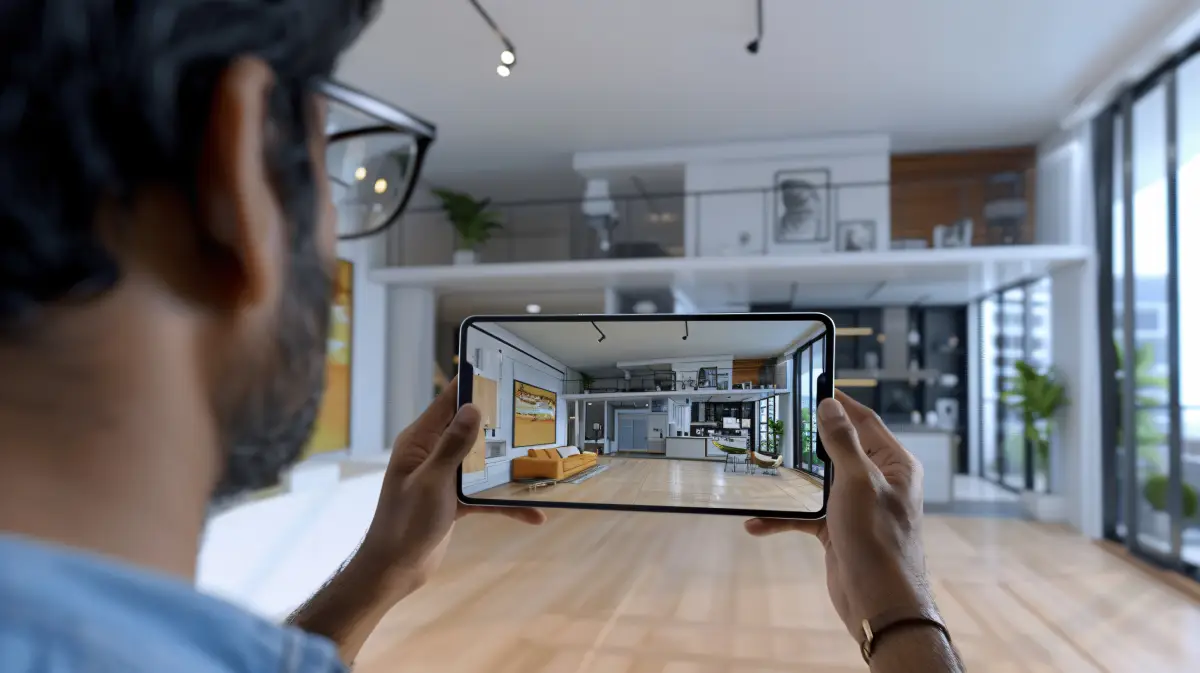Top Design Trends for Real Estate Websites in 2024
You need to be unique, but don’t be extra unique. I mean, don’t make this extra complicated for visitors. Don’t create something that is hard to understand and new. People sure like unique, but they also don’t want to get confused.
That’s why we have gathered the best trends for real estate websites, which can add uniqueness and a user-friendly environment to your website. Read on to learn about it.
Quality Visuals
In today’s world, people seek visuals in everything rather than words explaining things. It is much easier to know about things.
Expert real estate broker Sal Dimiceli, who is successfully generating leads through his websites, said –
“High-quality visuals are the key to a compelling real estate website in 2024. Stunning images, immersive virtual tours, and engaging videos don’t just attract visitors. They create a lasting impression and drive deeper connections with potential buyers.”
So, if you want to grab visitor’s attention at a first glance, this is your catch.
Best Use Of MLS Listings
2024 real estate websites will be upgraded with smart MLS listings integration. What does that mean for you? It’s all about giving users real-time, accurate property info on your site. Imagine dynamic updates that ensure the listings are always fresh and relevant.
The advanced search filters let users narrow their choices by price, square footage, or neighborhood, making the search much more tailored and user-friendly.
Integrating MLS with interactive maps enhances user experience, allowing visitors to see where listings are located about schools, parks, and other amenities. It makes the site even more engaging.
Chat Bots
In 2024, chat bots have become essential for real estate websites, revolutionizing how agents and clients interact. These clever tools provide instant communication, a game-changer in a market where timely responses can make all the difference.
Imagine a potential buyer visiting your site at midnight—chat bots greet them, answer common questions, and even help schedule property viewings or request more information. They work around the clock, ensuring no inquiry goes unanswered, which can significantly boost engagement and lead conversion rates.
Chatbots will make your work a little easy and also user friendly at the same time.
Smart homes integration
Real estate websites now showcase properties with smart home technologies. It lets buyers see how these homes can make their lives more convenient and connected.
Think about it—
Potential buyers can instantly know if a home has smart thermostats, lighting systems, security features, or even integrated voice assistants like Alexa or Google Home. This added info helps tech-savvy buyers get excited about the possibilities of controlling their home environment from their phones or smart devices.
3D Tours
This trend allows users to “tour” multiple homes at their convenience, saving them time and allowing them to narrow down their choices before committing to in-person visits. It’s especially helpful for out-of-town buyers who can’t easily schedule physical tours but still want a detailed look at the property.
Some 3D tours even include interactive features, like clickable hotspots that provide more info on specific rooms or amenities, making the experience more engaging. By offering this virtual experience, real estate websites can stand out in a competitive market and provide users with a highly convenient, visually rich way to explore potential homes.
User Friendly Interface
A user-friendly interface is non-negotiable for real estate websites. Buyers want a website that’s easy to navigate, visually clean, and quick to load. Especially when they’re making big decisions like buying a home. The focus is on simplicity and intuitiveness so users can find exactly what they’re looking for without feeling overwhelmed.
Keep it simple—easy navigation, fast-loading pages, and a clean design are key. Users should find what they need without digging around. Since so many buyers search from their phones, make sure the site looks great on mobile, too. Also, include intuitive search filters that let users quickly narrow their options by location, price, and size. The easier it is to use, the longer visitors will stick around!
Warming ‘new’ neutrals
Think earthy tones like soft beige, warm taupe, and subtle terracotta, replacing the cool grays of the past. These colors bring a cozy, welcoming vibe to the site, making users feel more at home while browsing.
It’s all about creating a subtle warmth that resonates with today’s buyers, who crave both style and comfort. Plus, these tones help property photos pop, adding a touch of sophistication without feeling cold or clinical.
Accessible Color Combinations
Accessibility in design is more important than ever, and real estate websites are leading the way by using color combinations that are easy for everyone to read and navigate. High-contrast colors—like dark text on a light background make content clearer and more legible for all users, especially those with visual impairments.
The goal is to design a website that looks great as a real estate website while being easy to use for everyone. A well-thought-out color palette enhances the overall look and makes the site welcoming and inclusive for all visitors.
Outro
In short, embracing 2024’s design trends like seamless MLS integration, smart home features, 3D tours, and user-friendly layouts can make your real estate website more engaging and accessible. Using warming neutrals and high-contrast colors ensures a modern, inclusive site that stands out and meets the needs of today’s buyers. Use those trends and make your website stand out easily.



Leave a Reply